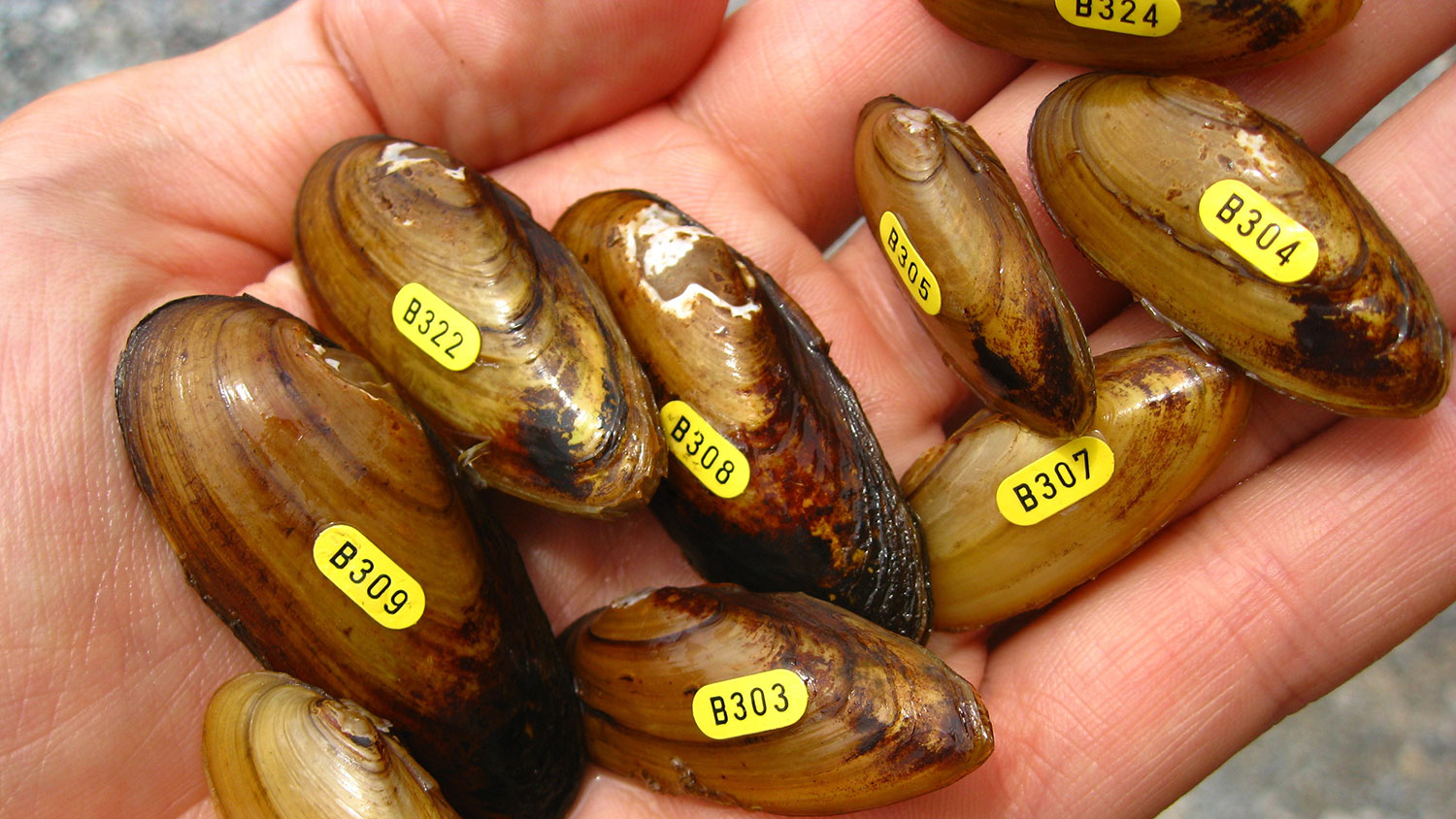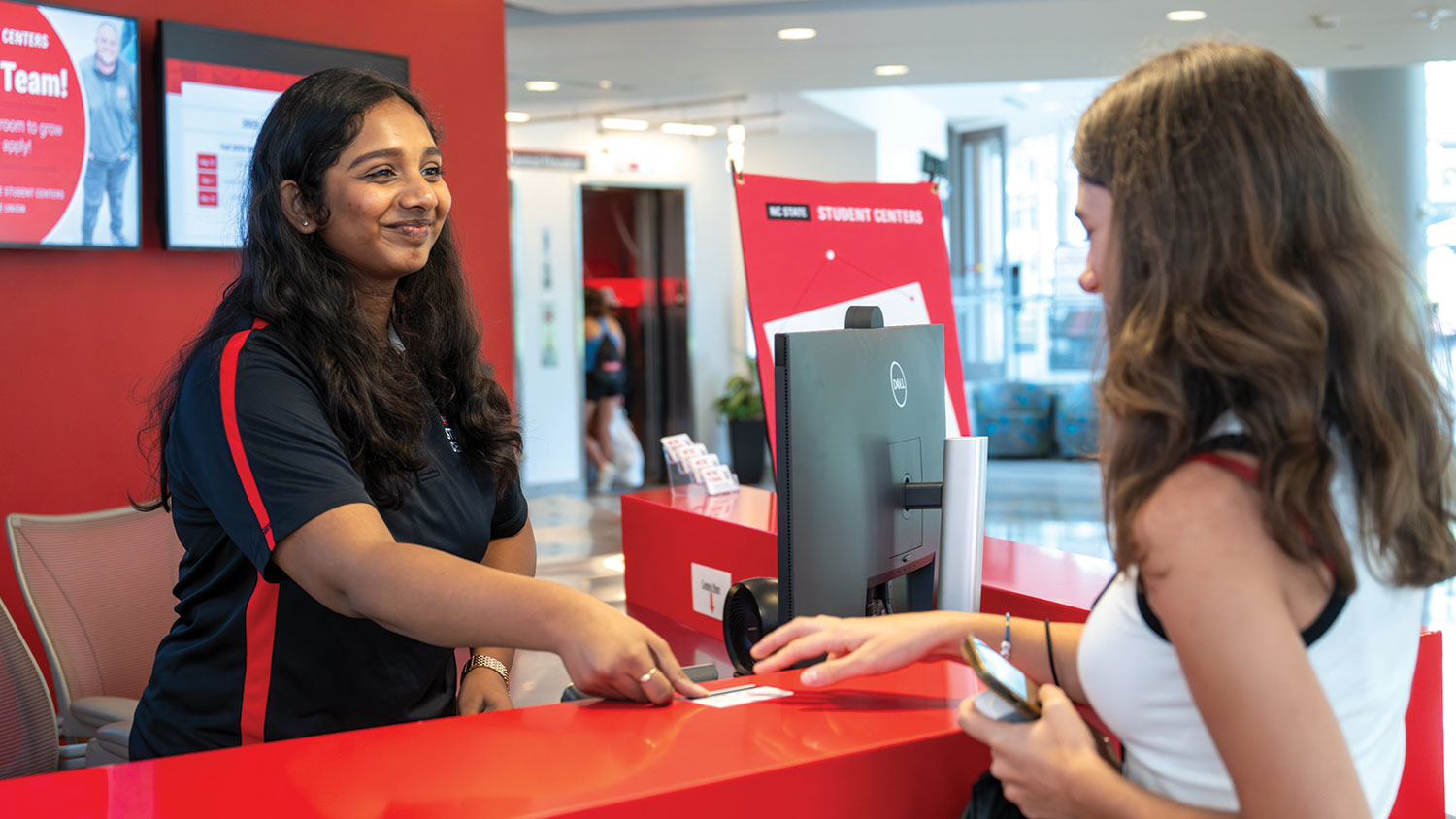Flexing for Mussels
Funding from N.C. Department of Transportation helps research to protect endangered freshwater shellfish.

By Jimmy Ryals ’03
When baby mussels are ready to leave the shell, their mothers lure host fishes to murky creek beds. Just as the fish strikes, Ma Mussel withdraws — but not before dusting its fins with her tiny larvae. With any luck, they live there until they’re mature enough to drop off.
NC State researchers Chris Eads and Greg Cope see and study that beguilement daily. And it’s hooked them as surely as it does largemouth bass. “They’re just amazing creatures,” says Cope, William Neal Reynolds Professor of Applied Ecology.
They’re also imperiled. That’s important because freshwater mussels filter pollutants out of water and stabilize river and creek beds against erosion. Cope, Eads and their team have been working to preserve and propagate mussels for a dozen years, and today they’re doing it at the new Yates Mill Aquatic Conservation Center.
The lab, part of Historic Yates Mill County Park, was established with $12.6 million from the N.C. Department of Transportation, part of a legal settlement to offset the environmental impact of a highway project. Roughly a third of that money transformed office space at the park, site of a 200-year-old gristmill, into a massive incubator for the study and safeguarding of snail, mussel and fish species that were displaced by U.S. Highway 540 around Raleigh. Among the species being propagated is the nearly extinct magnificent ramshorn snail.
Previously, the university’s mussel propagation work happened at the College of Veterinary Medicine. The pump house drawing pond water into and out of the lab is bigger than the whole CVM operation was, says Eads, assistant director and facility manager of the lab. And the water suits his subjects. “Yates Mill Pond water grows very big mussels very quickly,” he adds.
The settlement will fund more research and extension. The lab staff is working on a mobile exhibit that would make their work part of tours at the park, Cole says, with plans to eventually allow public tours of the lab.


